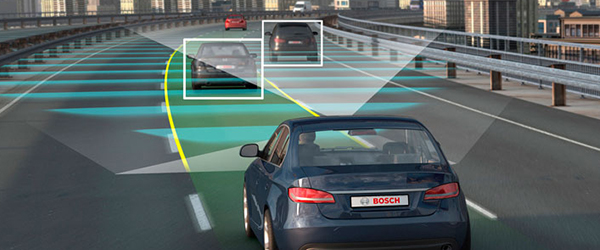
How IoT and Machine-Learning Can Help Improve Driver Safety
The transportation industry faces a serious problem. Riddled with high maintenance costs, infrastructure disasters, accidents, and driver fatalities, the industry has several challenges to overcome to improve driver safety. Administrators in the transportation industry strive to mitigate accident-related costs, including medical expenses, losses in wages and productivity, property damage, and road repairs. To do so, adopting and deploying smart, connected sensors that leverage machine-learning to gather comprehensive analytics through streamlined tools is essential.
The Internet of Things makes this connectivity possible by enabling vehicles and other critical devices with data gathering and communications ability. By utilizing these tools, administrators make predictions and reach decisions that will make the roads safer for their drivers and others traveling on roadways. Below, we will consider the benefits of implementing IoT and machine-learning into transportation industry infrastructure.
Poor outcomes on roadways are caused more often than not by the human element. Bad driving habits are a leading contributor to road fatalities. Reckless or distracted drivers, drivers under the influence, or those who speed on roads are the main causes of car accidents and deaths. Traditional safety regulations, while effective, are also reactionary. Bad driving behavior is curbed by incentivizing good driving habits to avoid legal punishment and/or fines.
IoT technology, on the other hand, is proactive. Telematics and onboard diagnostics reward and incentivize good behaviors that help drivers adopt safe driving habits. There are several ways of establishing metrics to achieve these goals. Telematics allows fleet management companies to learn specific, measurable events such as how often a driver speeds, if they’re over-accelerating, taking corners too sharply, or how regularly they’re using their seatbelts.
By collecting this data, management can score or rate their driver’s performance. Furthermore, telematics can also record the hours of service that a driver and vehicle undergo by recording start and stop times. This data is instrumental in combating fatigue-related accidents. For transportation officials, telematics can identify the most dangerous intersections so that municipalities can know more strategically where to allocate funding.
Infrastructure Maintenance for Disaster Prevention
Our network of roadways and bridges is reliant on the proper management of transportation infrastructure. Mismanagement, as history has proven, can easily result in collapsed bridges, potholes in roads, and unwanted congestion and fatalities. For transportation managers, the solution lies in IoT sensors and smart cement (cement equipped with sensors) integration as bridges and roadways are updated.
Some of the benefits of the technology are that the sensors monitor the structural status of roads and bridges under dynamic conditions and alerts officials about deficiencies before they evolve into catastrophes. In California, the New Carquinez Bridge has been built with IoT sensors. The bridge includes tri-axis accelerometers, strain gauges, and wind velocity, temperature, and potentiometer displacement sensors. Saving money and lives, the integrated sensors determine in real-time if the structure is at-risk or needs repairs.
Monitoring Road Conditions
For an everyday application, IoT road sensors can also help manage the flow of traffic when it comes to changing road conditions. Embedded underground, road sensors can measure changes in temperature, traffic volume, humidity, and weather and traffic pattens. Importantly, IoT road sensors can divert traffic away from hazardous areas.
There are several benefits of analyzing the data that IoT and machine-learning offer transportation officials. Importantly, IoT saves municipalities time, money, and resources by optimizing the use of limited maintenance resources and equipment. And as repairs from major catastrophes can often cost governments millions in repairs and years in added time, utilizing IoT can in advance can help avoid a major calamity. Additionally, gathering the data that IoT offers can help predict possible hazards due to weather conditions and congestion and alert the appropriate officials so that new short term strategies can be implemented.
Collection and Processing of IoT Data
Collecting and processing IoT data can come in a few different forms. One method applicable to the transportation industry is edge computing. Edge computing allows for data produced by IoT technology to be processed closer to where the data was created, rather than sending the information to various remote data centers or clouds. Edge computing, in this case, can serve as a node where data collection and processing can occur.
Street intersections are the likely location for most edge computers. However, street intersections are already crowded with cabinets, pedestals, and equipment-cluttered poles. Waterproof, unobtrusive, and environmentally-controlled mini-vaults will enable about 200-cubic feet of space under ADA curb ramps at street intersections (allowing for the placement of edge computers).
IoT has proven itself to be a beneficial addition to the transportation world. It’s making roads safer and drivers more mindful of their good and bad driving habits (and encourages proactive driving self-regulation). With the surge of automation, the future of IoT in transportation safety and accident prevention is bright. And by utilizing edge computing, particularly with waterproof mini-vaults under ADA curb ramps at street intersections, IoT data collection will be even more streamlined, efficient and unobtrusive.
With the power of IoT and machine learning combined, we could ultimately prevent drivers from entering hazardous areas, assist in collision avoidance, create and select optimal detours, and reduce traffic jams.

